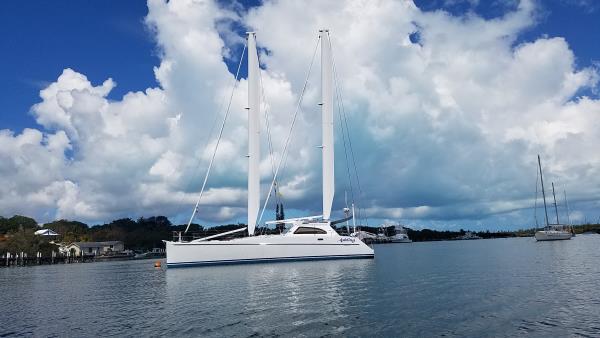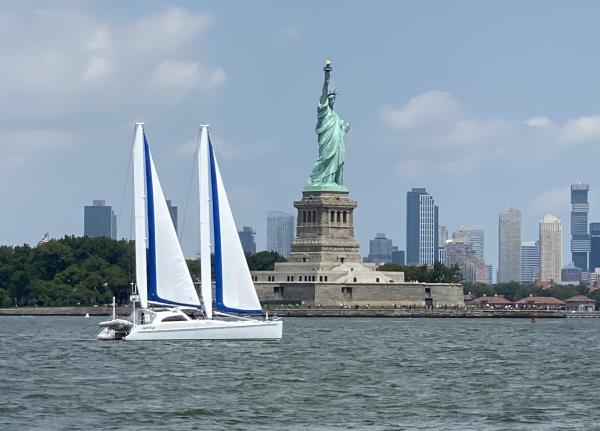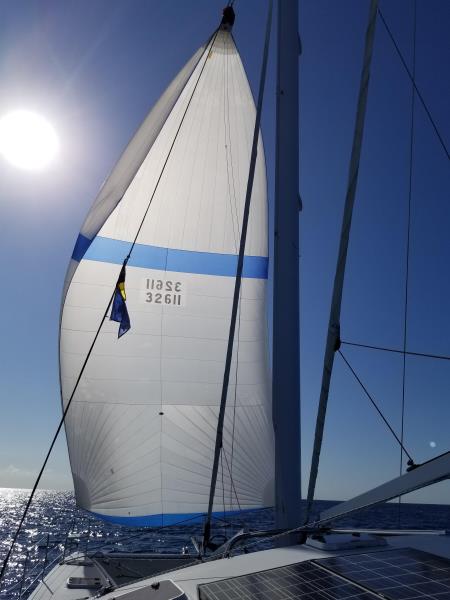Designed by Chris White, an innovative and respected multihull designer. The design was intended to build upon the proven performances of Atlantic series catamarans like the Atlantic 57 and Atlantic 42, while eliminating the difficulties of managing a huge insail when short-handed. Thus the jib+genoa+main single mast rig was replaced by a two-masted, two-jib rig with no mainsails. The masts themselves are the mainsails, each having a rotating outer shell that is a symmetric airfoil. The jibs are (normally) electric furling and self-tacking and the Mastfoils™ are manually rotated and locked for sailing, or unlocked for docking. A screecher is mounted upon the bowsprit. With an air-draft of 61 ft, Ashling can navigate the Intra-coastal Waterway when needed. The water-draft of less than 4 ft allows sailing in most areas of the Bahamas and the Florida Keys. The high under-wing clearance of 31 inches minimizes wave slaps against the hull.
The hulls have a slim design with plumb noses and fin keels. Propulsion is with twin Beta 38 diesels with Gori folding props on Twindisc saildrives, with the saildrives and rudders protected from groundings behind the fin keels.
The forward cockpit is another innovation by Chris White that is now found on many competing designs. This is a deep, spacious well with a steering pedestal and access to the various lines for controlling the jibs and the masts. The interior has two forward staterooms, each with a head and shower. An aft cabin has twin bunks (port side) while the starboard aft area contains the galley and a genset. The design is galley-up, only one step down from the salon. Aft of the salon is a large, wide deck useful for fishing, staging toys like kayaks, or watching the world go by.
SA/D is about 22, D/LWL is about 107, LWL/B is about 1.94 (47ft x 24ft)



All twelve of the existent Atlantic series Mastfoils™ were built by Alwoplast S.A. in Valdevia, Chile.